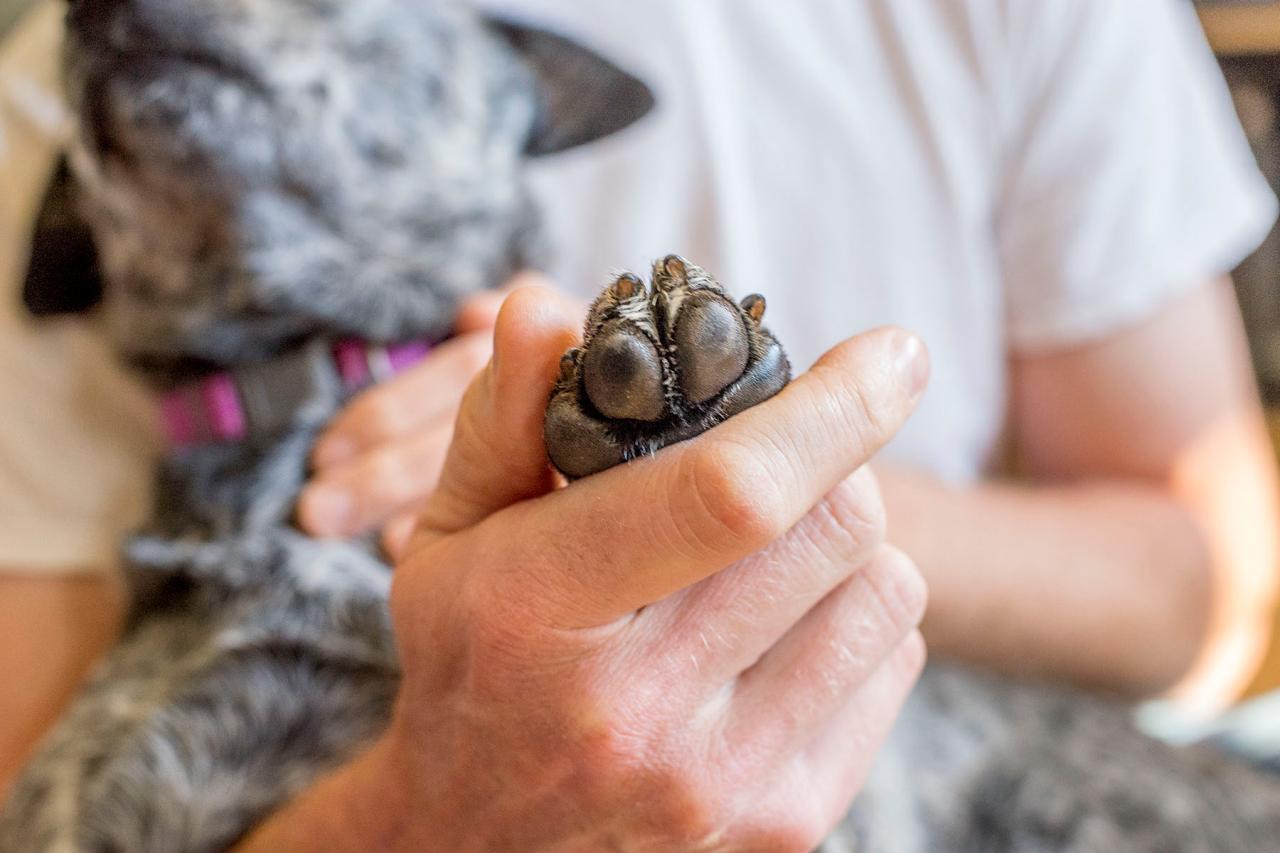Have you ever sat and watched your dog spinning in circles as it frantically attempts to bite its own tail and wondered exactly what going through its head?
Well, you’re not the only one!

Canine behaviorists have looked into the very same question and some of the answers might surprise you...
Why Do Dogs Chase Their Tails?
There are a number of reasons why dogs chase their tails, most of them are benign. There’s no reason you should try and stop your dog from chasing its tail, as this might confuse and upset it.
However, should you find your dog persistently chasing its tail, it’s worth checking out the common reasons below and seeing if it could be a sign of something more significant.

They’re Bored
The most common reason you’ll find your dog chasing its tail is that it is simply bored. Chasing its tail gives your dog something to do and a way to burn off a little of its pent-up energy, even if only for a few seconds.
All dogs need some sort of mental and physical stimulation in order to stay healthy. If you’re not paying attention to them or playing with them, they’ll end up trying to find their own ways to entertain themselves.
The good news is that there’s an easy fix. Taking your dog for a walk, playing some stimulating games with them, doing some training, or giving them an interactive toy are all great ways to distract your dog from its tail.

They’re A Puppy
Much like small children, puppies do a lot of exploring with their mouths. A puppy chasing its tail is a lot like a child putting a hand or foot in its mouth.
Puppies are also far more playful than older dogs and could just be chasing their tail because it’s a fun new thing to do.
They Have A Parasite Infestation
Flea and tick infestations can cause your dog’s skin to itch, especially around the base of its tail. It might be chasing its tail specifically to try and get some respite from that itching.
Other parasite symptoms to look out for are excessive biting, scratching, flea feces in their coat (which look like little brown specs), or ticks in their groin or under their legs.
The itching might also be caused by a mite infection. Mites often can’t be seen by the naked eye, so look out for the formation of bald spots and take your dog to the vets for a skin scrape if you are in doubt.
With mange, you can take advantage of the pinnal-pedal reflex by rubbing your dogs ear flaps and seeing if their hind legs automatically start a scratching motion.
They Want Your Attention
Most dogs are smarter than we give them credit for. If your dog doesn’t think it’s getting enough attention, it may resort to behaviors that it knows have attracted your attention in the past.
Unlike humans, dogs are not as choosey about the attention they receive. They would certainly prefer you’re happy and amused by their antics but, to a dog, a scolding is still attention. In fact, any kind of interaction is perceived by your dog as a reward of sorts and may prolong the unwanted behavior.
If you notice your dog chasing its tail around you, trying doing some training, or playing with your pet for a while. If you don’t have the time, then simply ignoring your dog is the best way to get them to stop.
They Might Have A Medical Condition
There are a few underlying medical conditions that can cause tail chasing. These include seizures, pain, infections, or potentially cancer. Thankfully, it’s very rare that tail chasing is an indicator of these issues and nearly all of them will have a wider set of symptoms.
However, if you do notice a range of odd behaviors that includes persistent tail chasing, it might be worth consulting your vet. Better safe than sorry.

They’re Anxious Or Afraid
Tail chasing, along with paw chewing or persistent scratching, can be a sign that your dog is experiencing anxiety or fear. Dogs use repetitive behaviors to calm themselves in these situations.
The best way to solve anxiety issues is to isolate what is causing your dog to be anxious. There are more obvious causes, such as loud noises, fireworks, or other sudden stimuli that can scare your dog, but there are also some less obvious triggers, such as:
- Being confined to a small area, such as a crate or a single room, for too long.
- Aggression from another animal or person, including a family member or pet.
- A lack of socialization or chances to interact with other people and dogs.
- A reminder of a previous frightening experience.
- Physical or emotional abuse.

When your dog is confronted by one of the above situations, it may turn to repetitive behaviors as a form of coping method.
The best way to solve these kinds of problems is to isolate what is causing the behavior in the first place. Knowing the underlying causes of your dog’s anxiety is the first step towards helping it to overcome the problem.
The good news is that most anxiety issues can be changed through patience, kindness, positive reinforcement, and a change in the behavior of the owner. However, if you notice your dog having persistent anxiety problems, it might be a good idea to contact a professional dog trainer for help.

Let Them Chase Away!
Tail chasing is a pretty straightforward dog behavior and is most likely due to boredom and an overabundance of energy. Taking your dog for a walk is a pretty easy fix.
While it can be a sign of a medical or psychological condition these issues are often accompanied by other, more obvious symptoms.
So, if your dog likes to chase its tail, feel free to let them.






